John Lewis, an icon of the civil rights movement, died at 80 years old on 17 July 2020. He will be remembered for a lifetime of commitment to fighting for the poor and minorities.
On 7 March 1965, John was brutally attacked as he and other civil rights leaders crossed the Edmund Pettus Bridge, marching toward the State Capitol in Selma, Alabama. That event stands out as one of the most oft-repeated nationally known pictures of overt violent racism. He bore the scars of his fractured skull for his entire life – as does America. In fact, all Americans bear the historical pain of that attack.
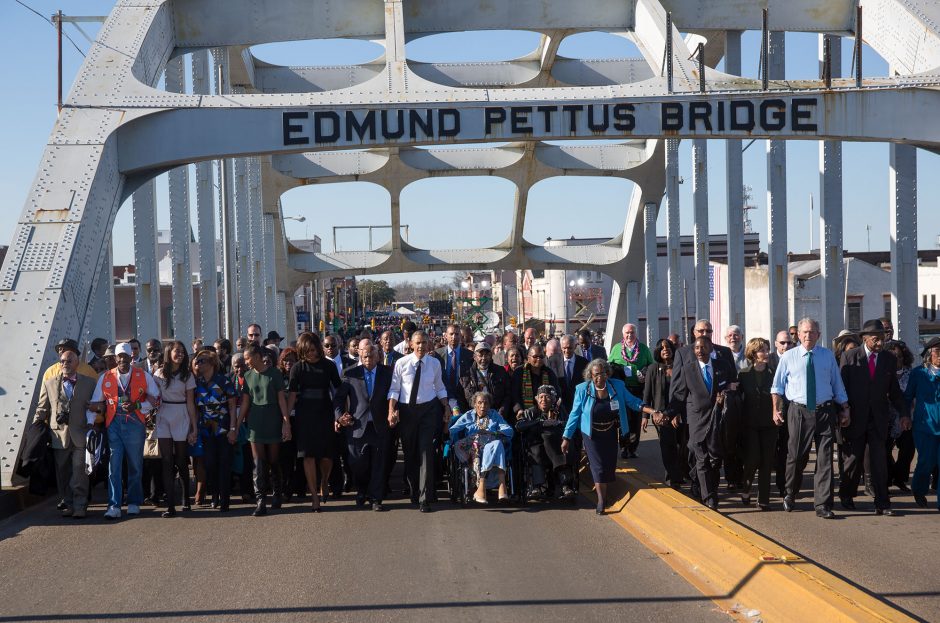
I first met John in 1980, when the National Consumer Cooperative Bank (NCCB) worked with him to spread the word of co-operatives to Black leaders and communities. I was tasked with arranging John’s meetings throughout the USA and traveling with him throughout California. He was soft-spoken, a good listener and uniquely humble in everything he did. It was a wonderful, memorable journey.
The last time I saw John was on 5 May 2010. I was being inducted into the Cooperative Hall of Fame that night and our daughter Hatley was going to Birmingham Southern College in Birmingham, Alabama, that fall. I thought we’d have about 10-15 minutes with John, but he gave us over an hour, speaking about the South and his life working with co-operatives, sharing some of his stories about the Federation of Southern Cooperatives. He told us the soul-stirring story of personally forgiving the white police officer who bludgeoned him on the Edmund Pettus Bridge. The officer was dying of cancer and wanted to apologise for his actions and to be forgiven. John and the former officer had talked and then prayed together in the same room that we were in. Part of his funeral procession included transporting his casket across that same bridge.
John Lewis will long be remembered for the person he was and the passions he held. Many will write of his character, his contribution to building a better America and his selfless willingness to push for and pursue change. He deserves every accolade and award he earned, for he represents the best of America. He saw the future of our nation and did all he could to lead us there. I will let others more capable than me sing his praises for a lifetime of service and good deeds. What I want to focus on is John Lewis’ support for co-operatives. Throughout his years of public service, John always wanted co-operatives to build a better, fairer, and more diverse and equitable America. So, here is a short chronology of John’s lifetime commitment to and engagement with co-operatives.
1958. John attends a weekend retreat at the Highlander Folk School in Tennessee. In his autobiography, Walking With The Wind: A Memoir of the Movement, he writes that before going to Highlander, he knew a lot about the uniquely inter-racial Highlander Folk School and its lonely, brave work striving for social justice in the South led by its co-founders Myles Horton and Don West. At that time, Highlander itself was a co-operative and taught its attendees about the development and use of co-operatives.
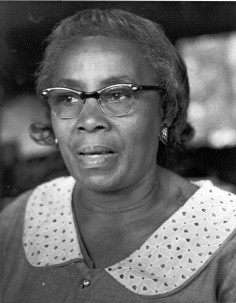
‘Grandmother’ of the
US Civil Rights Movement
John wrote, “In fact, the single person who most impressed me that weekend was a woman – a 60-year-old organiser named Septima Clark” On John’s Island, South Carolina, Clark worked with Esau Jenkins on teaching Black people on the island how to pass the rigid tests used to prevent them from obtaining the right to vote. This voter education was all done secretly in the backroom of a food co-op that Esau and other Black islanders had set up to help themselves. The program that started in the island’s little co-op store called “The Progressive Club” would go on to become the Citizenship School Program whose 900 schools registered millions of Blacks to vote in the South for the first time in their lives.
So, at the age of 18, John Lewis first came to understand the potential role of co-operatives. Rosa Parks had similarly attended Highlander in 1955 and had been impacted by Septima Clark as well. Rosa Parks later said: “I was 42-years old and it was one of the few times in my life up to that point when I did not feel any hostility from white people. . . . I felt that I could express myself honestly without any repercussions or antagonistic attitudes from other people… it was hard to leave.” But she did, and only months later, with her new-found confidence, she refused to give up her seat on a Montgomery bus.
At Highlander, John heard Guy Carawan sing the re-worded hymn, “We Shall Overcome,” first created by Black composer Charles Tindley. It was also at Highlander that John told me (in 2010) he first sat down for a meal at the same table with White people. It would be a seminal moment. “Of course, I left Highlander on fire”, John wrote. “That was the purpose of the place, to light fires, and to refuel those whose fires were already lit.”
1958. John attends a meeting at Spellman College in Atlanta on Nonviolent Resistance to Segregation. There, he was introduced to Bayard Rustin, who taught him about the long history of pacifist resistance. Rustin had already taught the same tactics to Rosa Parks and Martin Luther King, Jr. to use in the Montgomery Bus Boycott. Bayard Rustin went on to organise the 1963 March on Washington from his apartment in a union-sponsored housing co-op in NYC.

At the same Spellman gathering, John met and was impacted by Ella Baker (1903-1986), who, in my view, is the most unsung woman in the civil rights movement in the USA. In the 1930s, Ella had become national director of the Young Negroes Cooperative League and was developing other co-operatives in Harlem and New York City. She taught a young civil rights activist Bob Moses about co-ops. She was then hired by the NAACP to teach about co-operatives throughout the country. Ella also attended meetings organised by the Cooperative League of the USA (Now NCBA) and was the first staff member of the Southern Christian Leadership Conference (SCLC) to work for Martin Luther King, Jr. Ella also wanted to lend her organising skills to the young activists and volunteered to become the first staff member of the Southern Non-Violent Coordinating Committee (SNCC).
1964. John was elected chair of SNCC; in that role he was one of the Big Six who represented the organisers of the March on Washington for Jobs and Freedom (which took place on 28 August 1963, advocating for the civil and economic rights of African Americans). The other five members were: James Farmer, head of the Congress on Racial Equality, CORE (who lived at the Chatham Green Co-op in NYC, which had been sponsored by credit unions); Martin Luther King, Jr. (lifetime supporter of co-ops); A. Philip Randolph (writer about co-operatives, first lived in the Dunbar Apartments, the first housing co-op for Black people in NYC, and later lived in Penn South Co-op, NYC until he died); Roy Wilkins, executive director of the NAACP (who later joined the Parkway Village Housing Co-op in NYC); and Whitney Young (President of the Urban League, which organised housing and other co-ops).
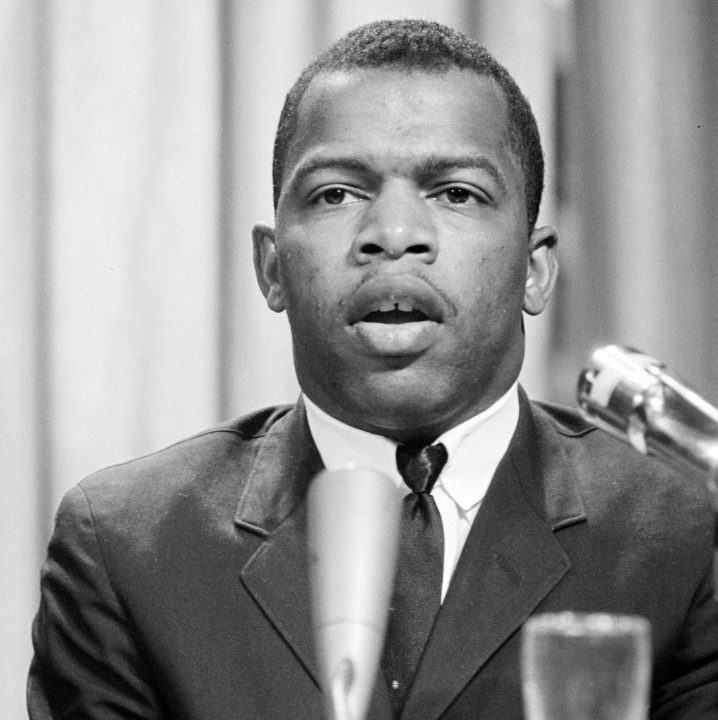
Bayard Rustin was appointed as organiser of the March on Washington. At his co-op apartment in Penn South, Bayard hosted the first meeting of the group that would go on to organise the March. Rachelle Horowitz and Tom Kahn, who also lived at the same Penn South housing co-op, were key members of the march staff. Norm Hill, who also attended the first meeting and worked on the march, later moved to the co-op, and still lives there today.
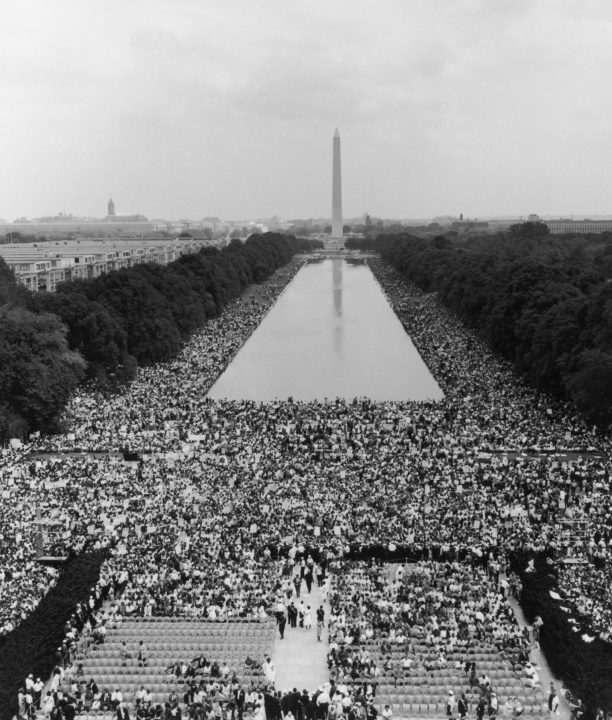
During 1963, Rachelle put up lots of march volunteers at her Penn South Co-op apartment. Among them, in particular, were Eleanor Holmes (today the non-voting Congress member for Washington, DC) and civil rights activists and sisters, Joyce and Dorie Ladner. In Walking With the Wind, John wrote about being in NYC just before the march and having Joyce Ladner, Tom Kahn and Eleanor Norton read over his controversial speech. John’s speech would end up being the most contentious one of the day. Roy Wilkins wanted it to be left out of the programme and others threatened to boycott the event if it were not read.
Rachelle told me in an interview that the hotel in NYC where John was staying had thin walls and John was practicing his speech there too loudly. The hotel manager asked John to practice his speech elsewhere or be evicted from the hotel. John asked Rachelle if he could come over to her apartment at the co-op to practice it; she figured that the co-op’s thick brick walls would make a good sound curtain. Dorie, Joyce, and Eleanor were staying there, too, but after hearing endless forceful renditions of the speech the women eventually had to kick John out. A few days later, a 23-year-old John Lewis gave his speech to the nation from in front of the Lincoln Memorial.
A couple of nights before, Rachelle had the job of also kicking out Bob Dylan. Dylan had come over to her co-op apartment to practice the songs he was doing for the March. Dylan had an additional motive, he wanted to serenade Dorie Ladner for as long as Dorie would allow. He would sing song after song to Dorie until Rachelle told him it was late, and he needed to leave as the four women had work to do tomorrow. He left reluctantly but “The Woman in Jackson” that, ‘I love her just the same” in his song Outlaw Blues is assumed to be Dorie Ladner.
1967. In Walking With The Wind, John Lewis talked about going to work for the Southern Regional Council (SRC) in Atlanta, GA, where he was made director of the SRC’s Community Organization Project. John’s task was to establish co-operatives, credit unions and community development groups in the Deep South. “This was hands-on work, and I loved it. I felt at home again, literally,” he wrote.
1978. John is appointed by President Carter as the associate director of ACTION under Sam Brown (at one time also a board member of the NCCB). John’s staff included 125 people in ten regional offices. The staff oversaw 5,000 Vista volunteers and over 230,000 elderly volunteers. “We tried to help them through a range of programs similar to those I had directed with the Southern Regional Council … We helped form co-operatives in rural communities.”
1980. John goes to work for the National Consumer Cooperative Bank (NCCB) as community relations director. NCCB president, Carol Greenwald, asks me to arrange tours of Black communities in the US where John could speak about the bank and its nonprofit arm as resources for co-operatives in Black communities. I had the honour of being on a two-week tour of California with John. Among those with whom we met were: mayor Tom Bradley (LA); Mayor Willie Brown (SF); Assembly member – now Congress member – Maxine Waters; and state senator Diane Watson. These Black leaders were all excited to see John and eagerly listened to the co-operative opportunities provided by the NCCB and its nonprofit arm. Bradley and Brown both later gave help to food co-ops assisted by the NCCB’s nonprofit arm.
1988. My wife Ann and I had hosted Eldridge Mathebula, a visitor from South Africa, whose organisation, The Black Consumers Union, wanted to develop co-ops for Black people in South Africa. At that time, however, under apartheid, only whites could develop and operate co-operatives in the country. Eldridge’s organisation invited me to South Africa to give talks on what types of co-ops could be organised and to work with South African governmental agencies on a pathway to legalise co-ops for Black people. At the time, there was an international boycott of South Africa, which I did not want to break. John, by that time, was a Congress member representing Atlanta. I asked his advice on whether or not I should go, and in the end he felt I should. In his opinion, the opportunity was there to instigate Black co-operatives as democratically run organisations. In a nation that disallowed Blacks from voting and political power, co-operatives could be a nonviolent way to build a new society. In 1989, the Black Consumers’ Union registered the first Black co-operative in South Africa.
Throughout this time, John was a good friend and champion of the Atlanta-based, Federation of Southern Cooperatives (FSC). He spoke at FSC’s 50th Anniversary in Birmingham, Alabama, in 2017. The National Cooperative Business Association reported: “During a stirring speech at the awards ceremony, prominent civil rights leader Rep. John Lewis (D-GA) called co-operatives a ‘key strategy’ in the civil rights movement. Echoing Martin Luther King, Jr., Lewis urged audience members to keep their ‘eyes on the prize’ of achieving true and lasting equality, despite setbacks.”
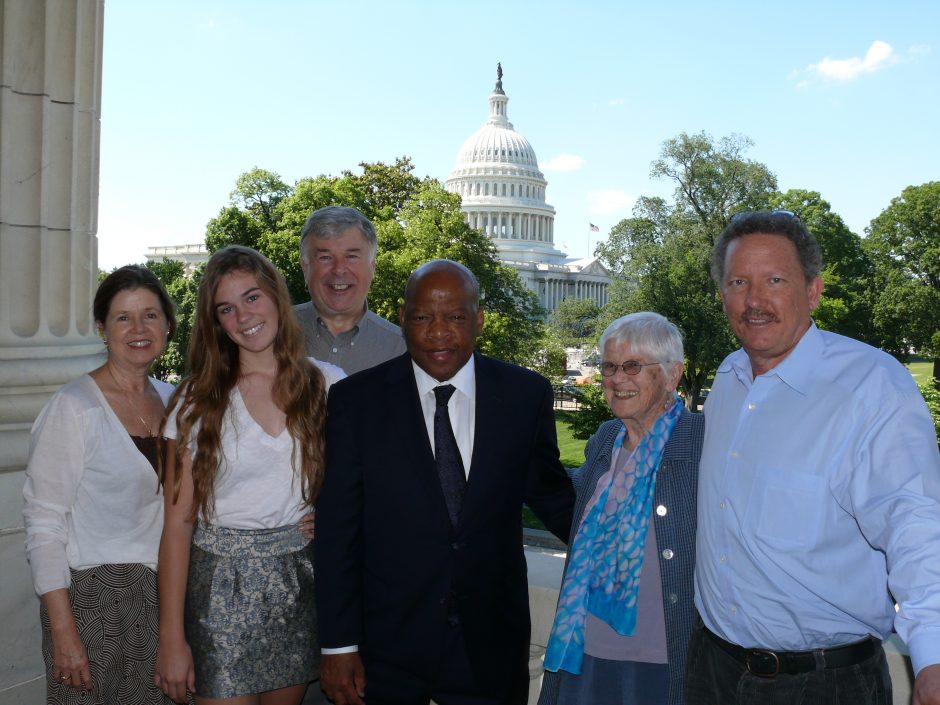
We have surely lost a champion, but honour a giant. He was the son of a sharecropper who then shaped our conscience and our nation. We have a moment now in which to reflect on the unique opportunity John Lewis has given us to re-direct ourselves to the cooperative world that he wished us to create. It is time for co-operators to return to making “Good Trouble”.